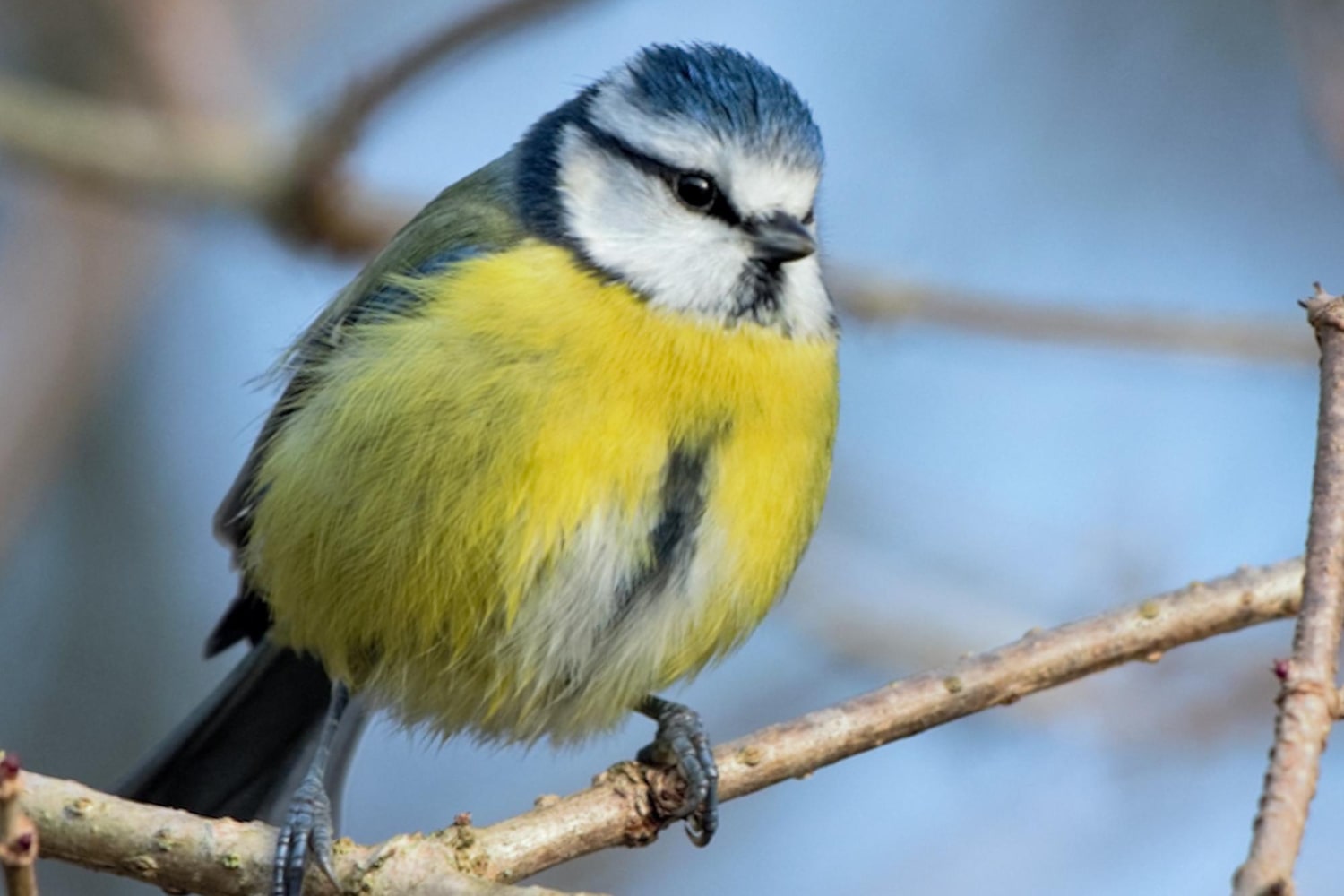Titmice are small but extremely lively birds that are easy to recognize by their colorful plumage and clear songs. They are often found near human settlements and adapt well to changes in the environment. Watching these birds is always fascinating, as they are curious and inventive by nature. There are many species of titmice in the world, and each of them has unique features. Below you will find fascinating facts about these birds that you may not have known.
- Titmice belong to the tit family, which includes more than 60 species. They are distributed across Europe, Asia, Africa, and North America, so almost everywhere you can find at least one type of them.
- The most well-known is the great titmouse, which can be recognized by its yellow belly and black stripe across the chest. This species is often found in towns and villages, gladly visits feeders, and even nests in birdhouses.
- Titmice are omnivorous birds. In summer, they eat insects, spiders, and larvae, while in winter they switch to seeds, berries, and even food scraps.
- Because titmice consume large numbers of harmful insects, they are called natural cleaners of gardens and parks. A single pair can eat thousands of caterpillars in one season, saving trees and crops from damage.
- These birds have an amazing ability to adapt to climate conditions. In harsh winters, they move closer to human dwellings, finding food and shelter there.
- Titmice do not accumulate large fat reserves. To survive, they must constantly search for food, and in winter even a short period without it can be dangerous.
- The voice of titmice is very diverse. They can produce dozens of different sounds, which they use to communicate, warn of danger, or attract a mate.
- These birds are very clever. Research has shown that they can solve problems to obtain food, for example by opening bottle caps or remembering hidden places.
- In the past, titmice in Great Britain became famous for learning how to open milk bottles left at doorsteps. They would drink the cream layer, which surprised people greatly.
- Titmice are monogamous birds. Pairs form for a long time, and the male actively helps the female with incubation and feeding of the chicks.
- A titmouse’s nest may contain between 5 and 12 eggs. The female lays them gradually, and the incubation lasts about two weeks.
- Chicks grow very quickly and leave the nest after only three weeks. Parents continue to feed them for some time until they can find food on their own.
- Titmice build nests in tree cavities, cracks in buildings, or artificial nest boxes. They line them with moss, fur, and feathers to provide warmth and comfort for the chicks.
- It is known that titmice sometimes raid the nests of smaller birds and even eat their chicks. This shows their omnivorous nature and the struggle for survival in the wild.
- The lifespan of titmice in the wild averages 2–3 years. However, under favorable conditions, some individuals can live up to 10 years.
- These birds are active throughout the entire day. They are constantly in motion, quickly moving from branch to branch in search of food.
- In cold seasons, titmice gather in flocks. In groups, it is easier for them to find food and protect themselves from predators, as they can collectively ward off threats.
- Titmice are able to adjust their diet depending on their surroundings. If seeds are abundant, they feed on them, and if insects are plentiful, they prefer protein-rich food.
- Interestingly, titmice also play a role in spreading plant seeds. After eating berries, they disperse seeds with their droppings, contributing to the growth of vegetation in new places.
- Their bright colors make them easy to spot among the leaves. Yellow, blue, and black shades make titmice some of the most beautiful birds in our regions.
- Titmice often show remarkable bravery. They are not afraid to approach humans closely and may perch nearby if they feel safe.
- In winter, people can help titmice survive by setting up feeders with seeds, bacon, or unsalted fat. This greatly increases their chances of enduring the cold season.
- Scientists actively study the behavior of titmice because they show a high level of adaptability. Their traits help to better understand how birds adjust to urbanized environments.
- Titmice also hold an important place in folklore and culture. Their singing is associated with spring and the awakening of nature, while the bird itself symbolizes joy and vitality.
The world of titmice is full of variety and surprising traits. They impress with their ingenuity, endurance, and ability to live close to humans. Incredible facts about these birds prove that even small creatures can have a huge impact on nature. You may not have known it, but their presence in our environment is a true gift that should be valued and protected.





